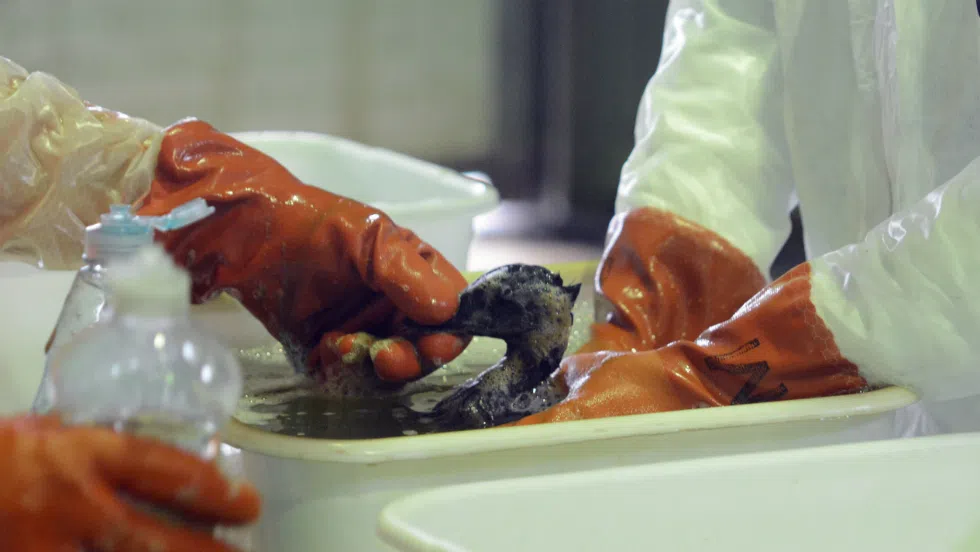
Oil-covered wildlife receiving TLC in Maidstone
A shop building in Maidstone’s industrial area now more closely resembles a hospital for wild animals.
Canada geese, goldeneye ducks, beavers, and garter snakes are among the oiled animals being treated at the facility being overseen by Focus Wildlife Canada. The company arrived Monday, July 25, after it was called in by Husky Energy in the wake of the oil spill into the North Saskatchewan River.
Chris Battaglia, president of Focus, is no stranger to these situations. He’s responded to an estimated 80 oiled animal situations. He was part of the response team sent to the wreck of the Exxon Valdez in Alaska in 1989, and helped clean up more than 20,000 penguins after the sinking of the Treasure in South Africa in 2000.
Battaglia explained the number of affected wildlife doesn’t necessarily correlate to the size of the spill. It’s affected by wildlife populations and species, and time of year. But cleaning them follows the same process.


